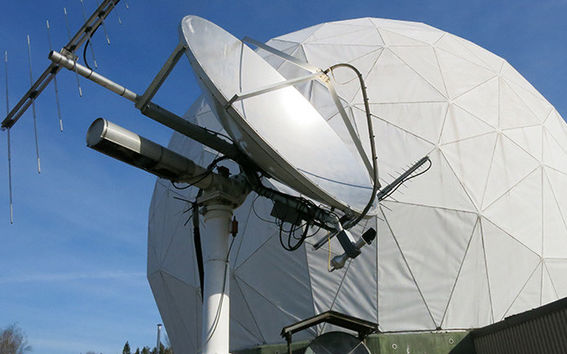New radome for Metsähovi radio telescope

The Metsähovi Radio Observatory has received funding of nearly a million euros for the replacement of the radome that protects its radio telescope. The radio telescope is in use 24 hours a day on every day of the year and the radome protects it against snow, wind, rain, and heat from solar radiation. The white radome is about 20 metres in diameter and is nearly invisible on radio wavelengths, allowing the telescope to make observations inside the radome almost as if there were no radome at all.
'The new radome enables the making of precise measurements for the next 25 years', says Joni Tammi, director of Metsähovi.
Snow that falls on the radome in winter is melted by heating the air inside the radome tens of degrees. The hot air rises and melts the snow, and the water flows to the ground, leaving the radome clean. Aligning the radio telescope to pick up radio waves from billions of light years away is such sensitive work that the smallest of wind gusts could interfere with the measurements. Heat radiation from the sun would also raise the temperature in the sensitive receiver and in the worst of cases, could damage the equipment. Inside the radome the telescope is constantly in a shadow, which means it can be pointed at the sun without worry, enabling, e.g., observations of the sun that have taken place at Metsähovi for the past 40 years.
New radomes are not available off the rack; there are only a couple of producers in the world that can supply radomes that are of sufficient quality. The radome needs to be designed in such a way that the shape does not impede the passage of radio signals. The hope is that the radome could be in use already next year.
Read more news

Get to know us: Associate Professor Maria Sammalkorpi
Sammalkorpi received her doctorate from Helsinki University of Technology 2004. After her defence, she has worked as a researcher at the Universities of Princeton, Yale and Aalto.
Aalto computer scientists in ICML 2024
Computer scientists in ICML 2024
Getting bacteria into line
Physicists use magnetic fields to manipulate bacterial behaviour